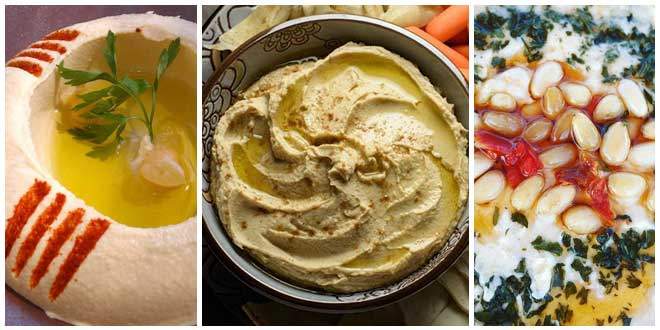Hummus, the creamy dip from the Middle East definitely deserves its excellent reputation as being a tasty and healthy food. If by any chance you’re not into hummus, we bet at least you know someone who is. Your friends, your parents, your landlord, your boss, someone must be into this tasty food, because it’s truly irresistible.
On the other hand, if you’re also a great fan of hummus and can’t help yourself from dipping pita or tortillas into this delicious sauce, we’ll show you 15 reasons why eating hummus every single day is more than ok for your overall health. We’ve also prepared 10 great hummus recipes for you to enjoy, so check them all out!
What Exactly is This Hummus Everyone’s Been Talking About?
Hummus is also known as hummus bi tahini is an Egyptian and Levantine food dip or spread made with ingredients which include cooked and mashed chickpeas or other beans blended with olive oil, tahini, salt, lemon juice and garlic. Nowadays, hummus is famous all over the Middle East, including Turkey, throughout North America and also Morocco. It’s very appreciated in Middle Eastern cuisine around the world. You can also find it in almost every grocery around North America.
History and Facts about Regional Preparations
The oldest recipes for a dish that was similar to hummus were found in some cookbooks recorded in Cairo around the 13th century. Hummus has been connected to the Ayyubid Sultan named Saladin who was the first man known to prepare the food, according to some food historians. Hummus was also served by rolling it out where it used to sit overnight. This gave it quite a very different texture. The essential ingredients of hummus (sesame, chickpeas, garlic, and lemon) have been consumed for more than a millennium.
 Consumed as an appetizer and dip, hummus is scooped with flatbread also known as pita. It can also be served as an accompaniment to grilled chicken, falafel, eggplant, or fish. Some garnishes include cucumber, chopped tomato, parsley, caramelized onions, whole chickpeas, sautéed mushrooms, olive oil, paprika, hard-boiled eggs, sumac, olives, pine nuts, and pickles. It’s also served along with crackers or tortillas outside the Middle East.
Consumed as an appetizer and dip, hummus is scooped with flatbread also known as pita. It can also be served as an accompaniment to grilled chicken, falafel, eggplant, or fish. Some garnishes include cucumber, chopped tomato, parsley, caramelized onions, whole chickpeas, sautéed mushrooms, olive oil, paprika, hard-boiled eggs, sumac, olives, pine nuts, and pickles. It’s also served along with crackers or tortillas outside the Middle East.
In Egypt, hummus is usually eaten with pita bread and often it’s flavored with cumin or other different spices. In Israel, hummus is also a very attractive part of daily meals, and the reason for this is that it’s made from ingredients that follow Kashrut – the Jewish dietary laws – and it can be combined with both dairy meals and meat.
As a result of hummus’ popularity, Israelis have elevated it to a national food symbol and they’re consuming it more than twice as much as the Arab neighboring countries. Hummus has long been a staple food also for Jordanians and Palestinians where they serve it warm on bread for breakfast, dinner and lunch.
In Cyprus, hummus is part of both the Greek Cypriot and Turkish Cypriot cuisines.
Nutrition
Chickpeas, which are the main ingredient of hummus, have an appreciable composition that includes protein, dietary fiber, B vitamins, manganese, and many other nutrients. Hummus recipes usually vary therefore so does the nutritional content which depends on the relative proportions of tahini, chickpeas, and water. Hummus provides 170 calories in 100 grams and it’s quite an excellent source of the B complex vitamins, dietary fiber, and more dietary minerals. It has about 14% total fat from olive oil and tahini and the other components include 17% total carbohydrates, 65% water and a small amount of sugar, and 10% protein.[1]
Hummus Surprising Health Benefits
Over the last years, hummus has exploded in popularity, at least in the US. The super talented vegan beautiful actress Natalie Portman once told Vogue magazine that she consumes hummus every day.
Here are some of the most significant benefits for the body’s health that make hummus even a more irreplaceable food:
-
Maintains an Optimal Health for Your Digestive Tract and the Intestines
Hummus composition has enough high fiber content, and this is one of the benefits which can keep the digestive processes running as healthy as possible. Hummus is a tasty and efficient manner to get more fiber into our diet. Fiber itself is known for its great health benefits such as preventing heart disease.
-
It’s a Great Source of Plant-Based Proteins
Hummus is an excellent protein source for omnivores, vegans, and vegetarians. Chickpeas are very high in protein and this can help you feel full after one meal that contains hummus. Such a feeling of satiety will ensure a smaller appetite between meals and this is great for weight control.
Hummus is often consumed with pita bread or some other types of whole grain and grains mixed with chickpeas make up quite a complete protein which contains all necessary amino acids that are essential for the body and will be later used for producing energy. Tahini is also an excellent source of amino acids.[2]
-
Balances Cholesterol Levels
All beans and especially chickpeas have already been proven to help balance cholesterol levels, and this way they also protect against heart disease and reduce hypertension. Hummus is usually eaten in various Mediterranean nations (mostly Greece and Turkey) which are known to experience some excellent health meaning longevity and very low rates of cardiovascular disease.
This happens because of the high fiber content from chickpeas which helps people avoid gaining excess weight, mostly around the organs. Beans are also very useful because they keep the arteries clear from plaque build-up and they decrease the risks of cardiac stroke and arrest.[3]
Studies have shown that one daily serving of beans is able to decrease the risk of a heart attack and bad cholesterol (LDL) levels.
-
Offers Protection Against Cancer
Chickpeas also provide high protection against cancer, especially colon cancer. They have the capacity of keeping a healthy digestive system and they assure proper health for the colon, keeping it free of harmful bacteria and other toxins. The beans’ fiber is able to help waste move on out of the body very quickly.[4][5]
-
Reduces the Risks of Diabetes
It has already been proven that a diet that is rich in beans will reduce hyperglycemia and also balance blood sugar levels. This results in a decreased risk of developing diabetes or even insulin resistance. Studies have shown that people who ate beans very often and then switched to diets with fewer beans, were more likely to suffer from a higher rate of disease. After reintroducing beans back in their diet, these people experienced fewer health issues and their blood sugar levels became balanced again.
-
Decreases Inflammation
Inflammation represents the body’s natural defense system against toxins. When our body has a high level of inflammation, it actually indicates that our organism is trying to overcome toxins of different types such as medicinal or environmental toxic substances or even toxins from unhealthy foods.
Fortunately, there are some foods that are useful in reducing inflammation and also the risk of arthritis and disease, helping the body to heal much quicker.
Hummus composition includes olive oil, garlic, and chickpeas and all these have anti-inflammatory properties. Recent studies have shown that garlic extracts reduce inflammation and also help win the fight against wrinkles and other aging signs. Garlic has been used for centuries for its health benefits and because it boosts immunity and it cures the disease.
Olive oil reduces inflammations in the body and can also help in balancing cholesterol levels. In addition, chickpeas reduce blood clots.
-
High in Minerals and Vitamins
Beating the winning combination of all essential micronutrients that hummus ingredients have to offer is a pretty hard thing to do! Besides protein and fiber, chickpeas are also high in folate, iron, phosphorus, and B vitamins. Lemon juice also contains a high level of vitamin C and antioxidants which boost the immune system. Tahini’s composition includes magnesium, copper, iron, zinc, phosphorus, and calcium. Garlic contains antioxidants, minerals, and vitamins including vitamin C, vitamin B6, manganese, selenium.
-
Promotes Optimal Bone Health
Sesame seeds which are used in tahini are an excellent source of essential minerals including copper, zinc, magnesium, calcium, phosphorus, selenium, and iron. Bone loss represents a problem, especially as we age. Women at menopause experience bone weakening and osteoporosis due to hormonal shifts. The copper from tahini can help the health of the skeletal structure by facilitating the binding of elastin to collagen, and this is crucial for the bones. Calcium can lower the levels of bone loss and zinc helps bone development and it is also a protector of the whole bone system’s health.
-
Protects the Heart’s Health
Research has suggested that diets that are rich in extra virgin olive oil can prevent cardiovascular problems. If you regularly consume some high-quality olive oil the result will be improved blood pressure levels, glucose metabolism, and reduced levels of bad cholesterol. Sesame and olive oil can also reduce inflammation, and they provide essential antioxidants which play a significant role in maintaining the heart’s health and keeping an optimal structure of cell walls and of arteries.
-
Boosts the Body’s Energy
Chickpeas contain starch – a very complex carbohydrate that is used for producing energy by the body.
Starch contains some natural sugars – glucose – and they are used in our bodies for essential functions. Starch takes an extended period of time to break once it has been consumed, unlike pure bad sugars which we can find in lots of products such as refined flour, pasta, white bread, candy, soda, and most processed foods. The fact that starch breaks down in a longer period of time means that it can provide time-released energy and it won’t spike our blood sugar the same way that simple carbs from processed foods do it.
-
Helps Alleviate Anemia
Chickpeas and tahini are great sources of iron and this helps the delivery of oxygen to red blood cells. If you have an iron deficiency, this can lead to anemia therefore consuming foods that are rich in iron can prevent such health problems.
-
Great For Various Allergies
Hummus is nut-free, gluten-free, and dairy-free. If you have one of these allergies, you’ll be very happy to find out that you can enjoy hummus without any risks. Hummus can be warped in so many flavors, so you can use it for replacing foods that you might be allergic to.
-
Healthy Snack During Pregnancy for Both the Mother and the Child
Such a delicious and nutrient food as hummus provides significant health benefits for all ages including during pregnancy. Folate will help in preventing the risk of birth defects in babies. All the nutrients from hummus assist the mother and also the fetus to stay healthy therefore hummus makes an excellent snack for craving and hungry pregnant women.
-
Keeps The Muscles Healthy
The amino acids from chickpeas are critical for building healthy tissues and muscles. They are the building blocks of proteins used by the body for physiological processes which include tissue repairing, muscular strength, healthy brain functioning, and also energy production.
-
Great Substitute for Unhealthy Foods
Besides all the extraordinary health benefits that hummus can provide, it’s also very helpful for avoiding the harmful effects of other not-so-great foods. For instance, hummus can be used as a substitute for mayo which is essentially composed of fat and eggs. Hummus can also be mixed with broth or water until it’s thin enough to be used as a dressing for various salads. It can also be used as a dip for different raw veggies successfully replacing ranch dressing. Hummus is definitely a healthier alternative.[6][7]
Types of Hummus and 10 Tasty Variations of Hummus Recipes for Some Delicious Snacking
There are various ways to use hummus and they include the following: as a dip combined with whole-grain sprouted bread or even crackers or tortillas, as a dressing on salad or grains, smeared on a vegetable-based sandwich, as a healthy substitute for butter or sugar jelly and much more. All the different types of hummus are now available in every grocery store, and, today, finding and using hummus is easier than ever.
You should definitely check out the hummus selection of health food stores because you’ll find varieties unlike you’ve seen in traditional grocery chains. If you visit some vegetarian-based groceries or health food stores you’ll discover that it’s now very common to get hummus made from other types of beans (edamame, black beans, lentils) and with all kinds of ingredient additions and various flavors which will spice up any meal.
Ideas for Hummus Recipes
-
Avocado Hummus
This green version of hummus is a cross between traditional hummus and guacamole, and it’s packed with nutrients due to the avocado and it’s also full of lovely flavors.
Ingredients:
- 2 medium ripe avocados, cored and peeled
- 1 can of chickpeas, well-drained
- 3 Tbsp olive oil, plus more for serving
- 3 Tbsp fresh lime juice
- 1 1/2 Tbsp tahini
- 1 clove garlic, peeled
- 1/8 tsp cumin
- Salt and freshly ground black pepper
- Red pepper flakes
- 1 – 2 Tbsp finely chopped cilantro leaves
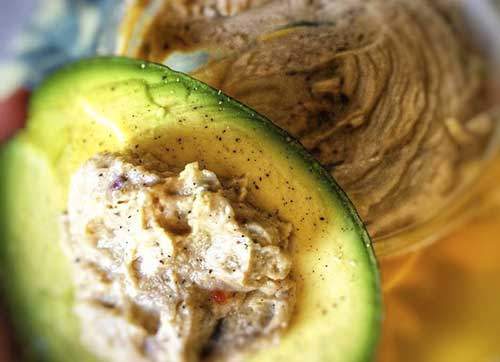
Directions:
Pulse the olive oil, chickpeas, tahini, garlic, and lime juice in a food processor until the composition becomes smooth. Then, season everything with salt and pepper, add avocados and cumin and pulse the mixture again until it’s creamy and smooth.
Serve it topped with olive oil and also sprinkle some cilantro and some red pepper flakes. You can serve it with tortilla chips or pita chips.
-
Black Bean Hummus With Cumin and Lime
This is a very healthy hummus recipe, perfect as an appetizer for your next party.
Ingredients:
- 1 – 2 Tbsp chopped fresh cilantro
- 1 – 2 Tbsp fire-roasted diced green chiles
- salt and pepper
- 1 – 15 ounce can black beans, drained and rinsed
- juice of 1/2 a lime
- 1/2 teaspoon cumin
- 1 teaspoon chili powder
- 1 clove garlic
- 2 1/2 Tbsp olive oil
- 2 Tbsp Tahini
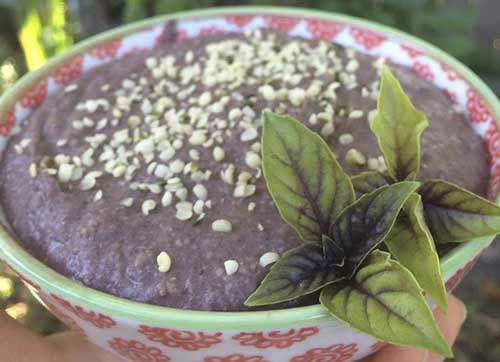
Directions:
Combine the tahini, black beans, olive oil, lime juice, garlic cloves, chili powder, and cumin into a food processor and blend everything until it’s all smooth. If you need some more liquid for better consistency, add 1 or 2 tablespoons of water.
Stir in the diced green chiles and the chopped cilantro and season with pepper and salt.
-
Baba Ghanoush
This Levantine variety of hummus uses eggplant, lemon juice, and garlic and it’s a super healthy treat that is best served warm but you can also keep it in the fridge for a couple of days.
Ingredients:
- 1/8 teaspoon smoked paprika
- 2 medium eggplants
- 1 Tbsp parsley, chopped
- 1/4 cup tahini
- 1/4 cup lemon juice
- 1/4 teaspoon cumin, ground
- salt
- 1 Tbsp olive oil
- 2 cloves garlic, minced
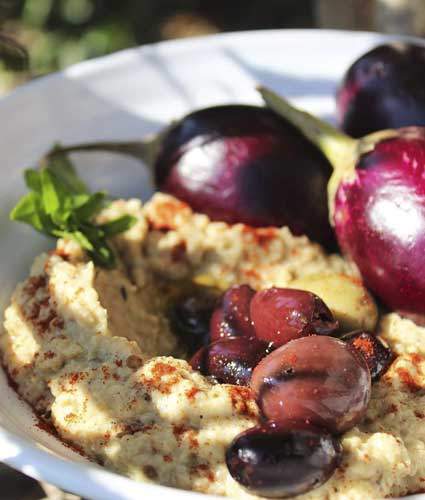
Directions:
Start by picking the eggplants a few times with a fork and then place them on a baking sheet. Bake them in a preheated oven (400F/200C) until they become really tender, about 30-40 minutes. Cut the eggplants, scoop out their flesh and puree them in a processor combined with the tahini, garlic, lemon juice, salt, and cumin.
Serve it garnished with olive oil, paprika, and chopped parsley.
-
Caramelized Onion Hummus
This recipe is incredibly delicious thanks to the savory caramelized onions. The result will be uniquely flavored hummus which you won’t get enough of.
Ingredients:
- 1 teaspoon sea salt
- dash of pepper
- 2 Tbsp water
- 1 Tbsp extra virgin olive oil
- ¼ cup lemon juice
- 1 medium yellow or white onion, peeled and sliced
- 3 garlic cloves, peeled
- 1 (15 oz.) can be chickpeas (garbanzo beans), drained and rinsed
- 3 Tbsp tahini
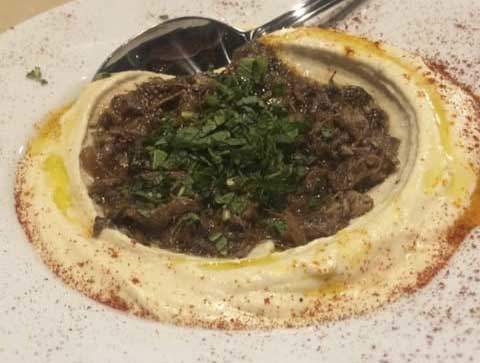
Directions:
First, heat the olive oil in a medium skillet, then add some onion slices and cook for 25 minutes, stirring. Add all hummus ingredients to a food processor and leave everything aside until the onion is ready. Once the onions are caramelized, let them cook slightly and then add them to the food processor. Process all the ingredients until everything is smooth and add some more water if you desire a different consistency.
Transfer the hummus to a serving bowl and garnish it with more caramelized onions. Serve the tasty hummus with pita chips or raw veggies. You can also serve it on sandwiches.
-
Cumin Roasted Carrot Hummus
This chunky hummus is the perfect choice for carrot lovers. Roasted carrots have a naturally sweet flavor which you’ll definitely love.
Ingredients:
- ¼ teaspoon cayenne pepper
- ½ to ¾ cup extra virgin olive oil
- 2lbs carrots
- 2 teaspoons cumin powder
- 1 teaspoon kosher salt
- 1 Tbsp olive oil
- 2 garlic cloves
- juice of 1 lemon
- 2 Tbsp tahini
- garbanzo beans, plus ¼ liquid

Directions:
First, heat your oven to 400 degrees and prepare a baking sheet. Lay the carrots and sprinkle them with salt and cumin, then drizzle with 1 tablespoon of olive oil. Roast them for 30-35 minutes then let them cool before placing them in the food processor. Process the carrots and add the garbanzo beans, garlic, tahini, lemon juice, cayenne pepper and salt. Prepare the hummus and add the liquid from the can of beans. Add some olive oil from the top until the hummus looks smooth.
Serve chilled.
-
Rosemary and Garlic Hummus
This hummus is loaded with garlic and its flavors are really balanced by the rosemary. You can spread it on toast or dip crackers into it.
Ingredients:
- 1/2 teaspoon pepper
- 3 Tbsp rosemary
- (3) 15 oz cans garbanzo beans, drained and rinsed
- 7 cloves of garlic, peeled
- 1 Tbsp vinegar
- 3/4 teaspoon salt
- 1 cup olive oil
- 1/4 cup water
- 1/4 cup lemon juice

Directions:
This one is quite simple. Blend all the ingredients together in a blender or in a food processor until the composition becomes smooth.
It should be served immediately and any leftovers can be refrigerated.
-
Lemony Spinach Hummus
Traditional hummus only gets better in this recipe because of the nutrients from the spinach.
Ingredients:
- 1/4 cup extra virgin olive oil
- kosher salt and fresh ground pepper
- 1 can chickpeas
- 2 cloves garlic, peeled
- 3 tbsp chopped chives
- 3 cups baby spinach leaves
- zest and juice of 2 small lemons
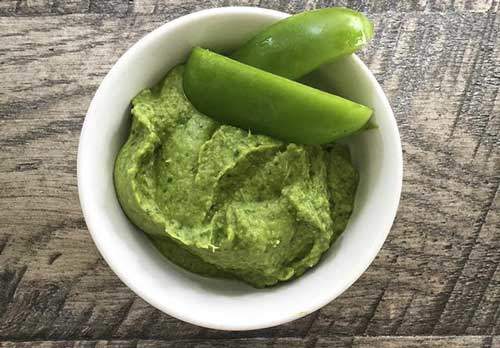
Directions:
Mix the chickpeas, chives, and garlic cloves in a food processor and then pulse until everything is roughly mixed. Then, you must add the lemon zest, spinach, and puree everything until it becomes smooth. Drizzle in the olive oil with the processor running.
Season everything with pepper and salt and then garnish with crunchy salt, celery leaves, or herbs.
-
Mushroom Hummus
Mushrooms will give the hummus an almost meaty taste which everyone will adore.
Ingredients:
- 1 Tbsp chopped parsley
- 3 cups baby bella or portabella mushrooms, sliced
- 1-14 0z can garbanzo beans drained and liquid reserved
- ⅓ cup tahini
- ½ cup olive oil plus 2 Tbsp
- 2 garlic cloves
- juice of 1 lemon
- Sea salt and freshly cracked pepper
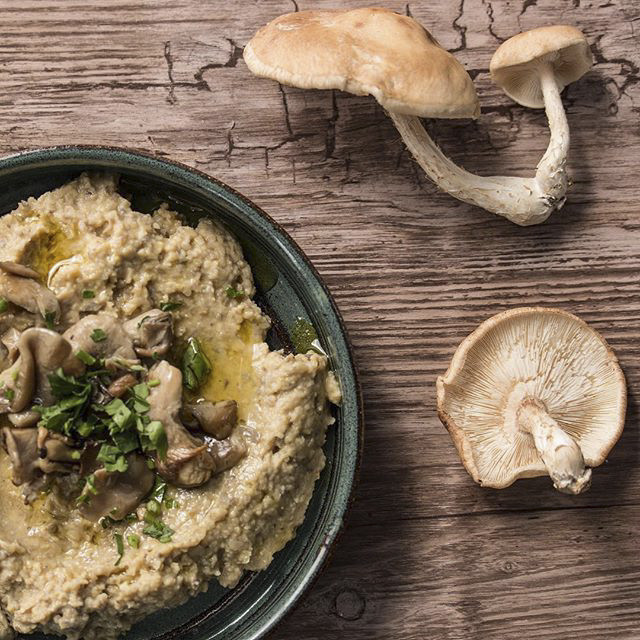
Directions:
You must first preheat the oven to 425 degrees. Then place the mushrooms on a baking sheet, add oil and also season with pepper and salt. Roast the mushrooms for 15 minutes until they become brownish and stir them. Remove the mushrooms from the oven and let them cool down.
Combine the garbanzo, olive oil, tahini, lemon juice, and garlic in a food processor and pulse for only a few seconds. Then add the mushrooms and leave some aside for garnishing. In the end, add some liquid from the garbanzo beans until the consistency becomes perfect. Season the hummus with salt and pepper.
Serve it with pita.
-
Sundried Tomato Hummus
Sun-dried tomatoes add some extra taste to this variety of hummus. You can top everything with fresh leaves of basil and you’ll get the best appetizer for an Italian night!
Ingredients:
- 2 Tbsp olive oil
- 1 (15 ounces) can of chickpeas
- 1/4 cup tahini
- 1 clove garlic
- 1/4 cup sundried tomatoes
- 1/4 cup lemon juice
- salt, pepper, and cayenne
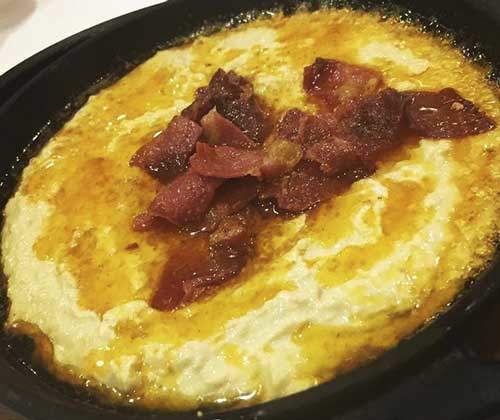
Directions:
Mix the chickpeas, tomatoes, garlic, tahini, lemon juice, and oil inside a food processor, and don’t forget to add more oil or water to get the consistency you’re looking for. Add cayenne, pepper and salt to make it as spicy as you like.
-
Pumpkin Hummus
If you thought you could only use pumpkin for pies, you were dead wrong. This one is perfect for the fall season, it almost smells of Halloween.
Ingredients:
- 1/4 teaspoon ground cinnamon
- 1 (15 ounces) can of chickpeas
- 1 cup pumpkin puree
- 1/4 cup tahini
- 1/4 cup lemon juice
- 1 clove garlic
- salt, pepper, and cayenne
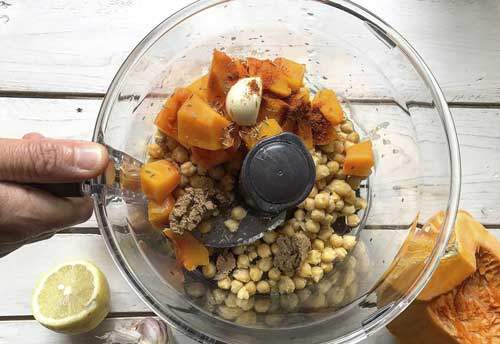
Directions:
Mix everything in a food processor and your hummus is ready to be served!
Enjoy and stay healthy!
References

